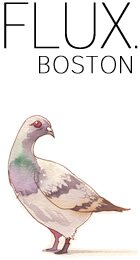
X-raying images is a non-destructive way of exploring beneath the surface of prized works of art in greater detail than ever before. This fairly new technique has opened up a whole new world to preservationists as art historians estimate that at least one in five paintings, including many of the Old Masters, have other pictures hidden beneath them.
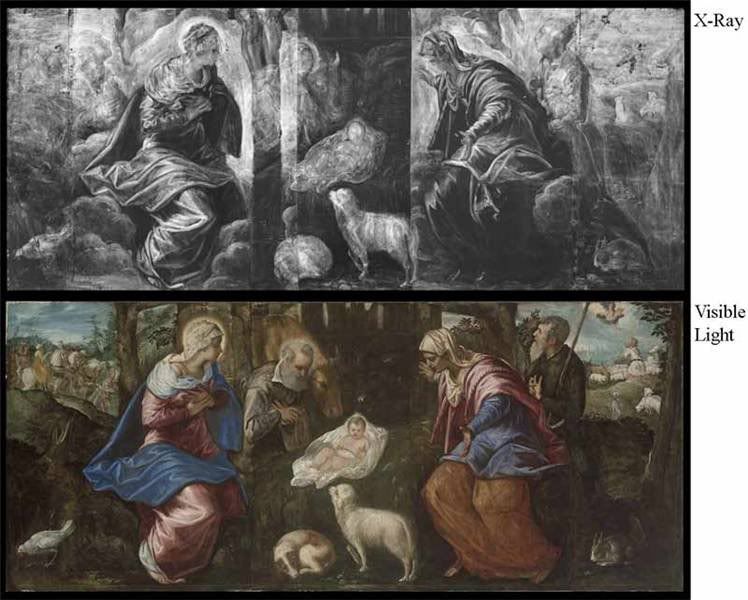
In 2009, one of my first FLUX. posts, What Lies Beneath was about employing the use of x-ray techniques on a Tintoretto nativity painting to answer the question: Why is only one central figure looking at baby Jesus? Wouldn’t the birth of Our Lord and Saviour be a pretty big deal?
Guess not.
There was probably a billboard for free chips and soda with purchase of a footlong sandwich from Subway off in the distance.

Since 2009, the technique of x-ray fluorescence spectrometry has been employed on one of the most famous paintings of all time, the Mona Lisa herself:
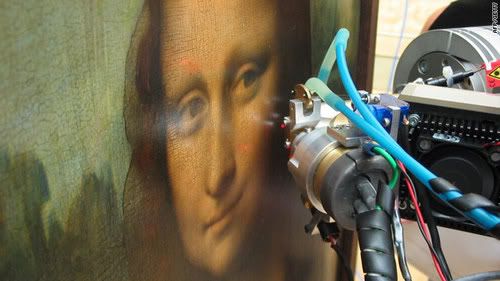
“Scientists have discovered that Da Vinci used a well known renaissance painting technique known as sfumato. For the non art historians among us, Sfumato is the mixing of thin layers of pigment, glaze, and oil to create lifelike shadows. The difference with Da Vinci was just how intricate his layers were. Apparently, Da Vinci used 30 layers of paint that amazingly only added 40 micromemters of paint—that’s half the width of a human hair.” (via gizmodo)
30 layers of paint. Half the width of a human hair. I’ll give you a minute to rip one out of your head so you get an idea.

While Da Vinci was careful to build up extremely thin layers of oil, Van Gogh was on the opposite side of the spectrum with a heavy handed approach to pigment application. Employing the same X-ray techniques used on the Mona Lisa to Van Gogh’s Patch of Grass, scientists uncovered a detailed portrait of a woman in the center of the work:
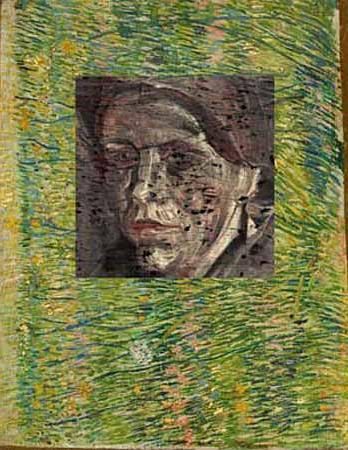
“Van Gogh would often re-use the canvas of an abandoned painting and paint a new or modified composition on top. ‘These hidden paintings offer a unique and intimate insight into the genesis of his works. Yet current museum-based imaging tools are unable to properly visualise many of these hidden images.”(via artknowledgenews)
The Van Gogh Museum, located in the Netherlands has a very detailed website which explains the techniques they employed in researching Van Gogh’s studio practice including infrared reflectography, nano-machining with focused ion beams, and scanning electron microscopy – energy dispersive x-ray analysis. Oh, my.
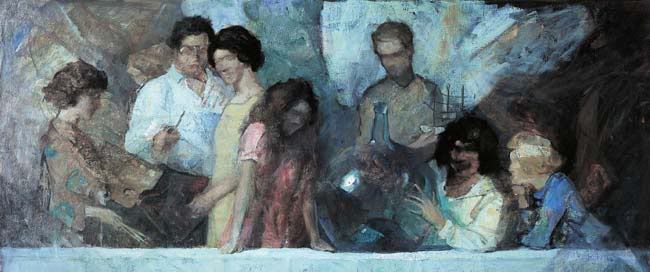
And possibly my favorite use of x-ray technology to date was when Dr. Jennifer Mass of University of Delaware used a synchrotron(x-ray machine) to dig beneath the layers of paint on 20th century illustrator NC Wyeth’s mid-mannered family portrait(above) in 2009 to reveal….
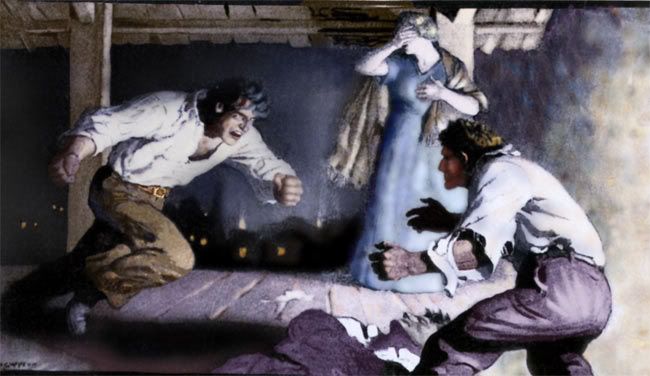
A FIST FIGHT. YES. I love it. That is how ALL family gatherings should go.
In addition to looking at the past, current artists have been employing the use of x-ray technology in looking towards the future, exploring new techniques in the creation of art.

Artist Hugh Turvey utilizes x-rays to see right through his subjects which have included flowers, motorbikes, and stiletto clad feet. ‘It’s about making the world transparent to reveal its true structure and form,’ he said. ‘I think it’s a natural human curiosity.’ Adapting and perfecting the technique to capture flowers in this light has taken Hugh about five years.
He is already looking to the future and the next challenges he has given himself. His art has led to a well-established relationship with the British Institute of Radiology, where he has been given access to state of the art equipment and received the honor of being made Artist in Residence.(via dailymail)
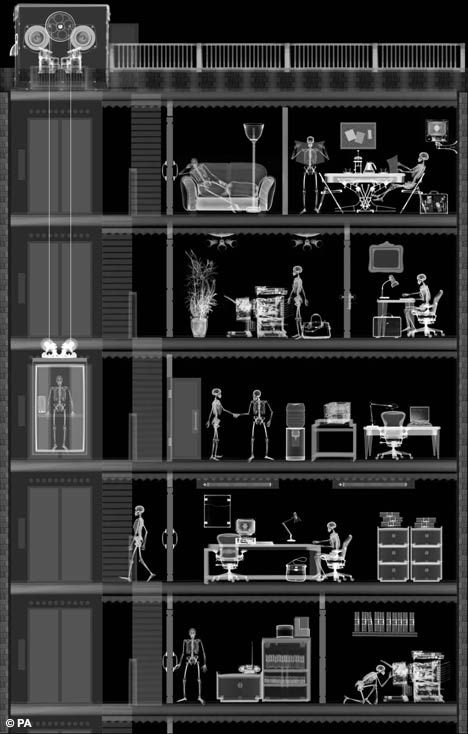
Nick Veasey, an artist out of England, has also been experimenting with x-ray technology and has been working with scientists to refine his technique. “He learned to gauge object density and structure by experimenting with a variety of materials including plastic, flowers, metals and people, taking the utmost care with his living subjects.” (via funtasticus)
There is an interesting interview with Nick from 2001 on Altpick where he talks about his craft and the use of corpses in his work lent to him by an unnamed undertaker. Errr. sketchy.
And finally, as a marketing major, I have to say I particularly enjoyed the Eizo: Pin-up Calendar” campaign last year.
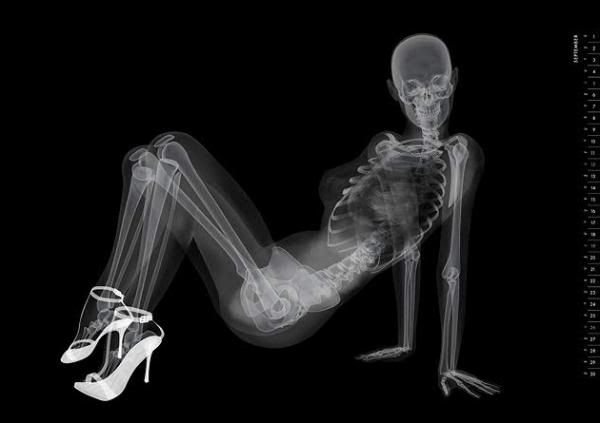
Eizo is a company that specializes in the production of medical supplies. What a great way of making such a traditionally dry subject playful and eye catching.
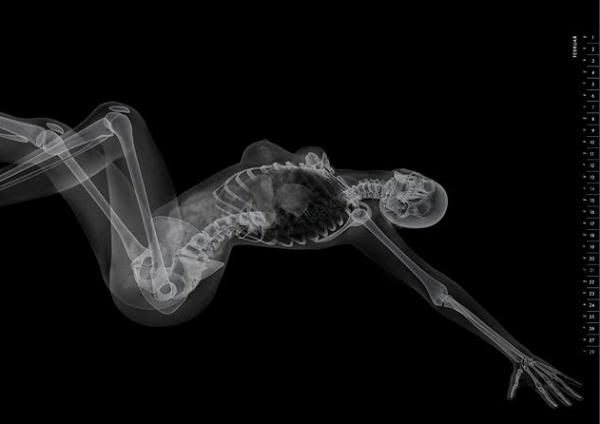
Vogue. ♥



